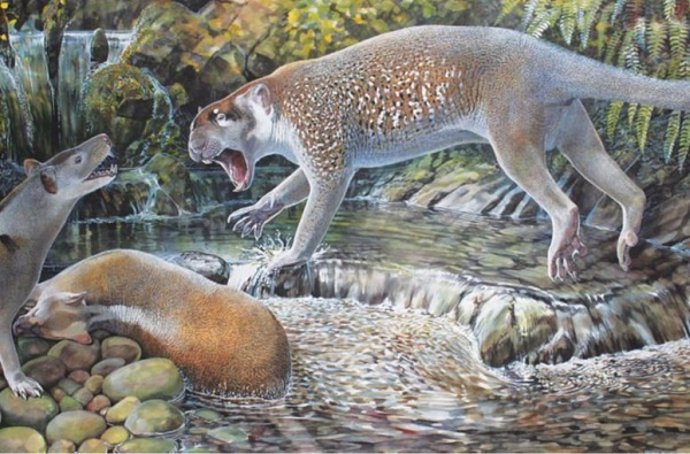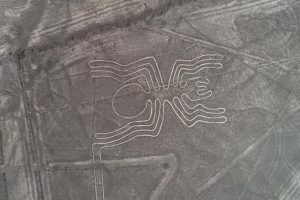File – Illustration of the extinct marsupial lion species ‘Wakaleo schouteni’ – THE JOURNAL OF SYSTEMATIC PALAEONTOLOGY – Archive
June 7 () –
The typical heating organ of mammals, brown fat (a type of adipose tissue that burns fat), It evolved exclusively in modern placental mammals.
This is what new research from Stockholm University shows about this milestone of 100 million years agowhich allowed these animals to conquer many cold regions of our planet. The work is published in the journal Science.
In collaboration with the Helmholtz Museum in Munich and the Museum of Natural History in Berlin in Germany, and the University of East Anglia in the United Kingdom, the Stockholm research team demonstrated that marsupials, our distant relatives, have a not fully evolved form of brown fat.
They found that the key heat-producing protein called UCP1 became active after the divergence of placental mammals and marsupials. This finding is crucial to understand the role of brown fat in evolutionendothermy and mammalian metabolism.
“Our study is an important contribution to understanding the origin and regulation of brown fat,” says Susanne Keipert, co-lead author of the study.
“The energy consumption function of brown fat is a major focus of medical research due to its potential to improve obesity, diabetes and cardiometabolic diseases; “all of which have reached pandemic proportions and are among the greatest threats to our healthcare system.”
This work marks the latest milestone from Martin Jastroch’s Laboratory at Stockholm University, which has pioneered research into the evolution of mammalian heat production and integrated this evolutionary knowledge to understand human metabolic diseases.
The new study shows that the marsupial UCP1 gene is actively transcribed in the adipose tissue of young opossums during a critical period of development when they are separated from their mother and experience cold stress. This is similar to the birth of placental mammals, when most babies need brown fat to regulate body temperature.
During UCP1 transcription, many, but not all, genes commonly expressed in brown fat are present in marsupials. This indicates that marsupials do not possess the fully evolved brown adipose tissue found in placental mammals. Furthermore, the heater protein UCP1 does not produce heat in marsupials, suggesting that this protoform of brown fat lacks thermogenic function. However, the function of marsupial UCP1 remains to be discovered.
“This evidence suggests that the genetic networks necessary to enable thermogenesis existed before the divergence of marsupials and placental mammals. However, the critical protein UCP1 developed its ability to produce heat only after the separation of marsupials“explains Martin Jastroch.
“To find the origin of brown fat, we cannot use a time machine. However, by examining current species that diverged at different points in evolutionary history, we can determine which ones have brown adipose tissue and which components of the producing machinery of heat are present. Marsupials separated from placental mammals about 120-180 million years ago. If marsupials had functional brown fat and its thermogenic protein, it would suggest that the organ existed before this separation. Since this is not the case, it is likely that it evolved later,” Keipert says.
Using bioinformatics tools on UCP1 sequence information from many animals, the researchers reconstructed the ancient placental mammal UCP1, as it may have existed about 110 million years ago.
They found that this ancient protein could produce heat, indicating the presence of heat-producing brown fat in the ancestor of placental mammals, but not before. This innovation likely allowed placental mammals to thrive in new, cold environments.
Brown fat is a unique warming organ in placental mammals, producing heat through a protein called uncoupling protein 1 (UCP1). The UCP1 protein transforms mitochondria into small heating units that directly convert fat and sugar into heat.
Brown fat allows newborn placental mammals, including human babies, to survive cold stress after emerging from the warm womb. Helps maintain body temperature in the cold, since the immature muscle cannot shake enough.
Later in life, brown fat may protect against metabolic complications by burning excess fat and sugars. Understanding how brown fat works is essential for developing therapeutic interventions for metabolic disorders.















Add Comment